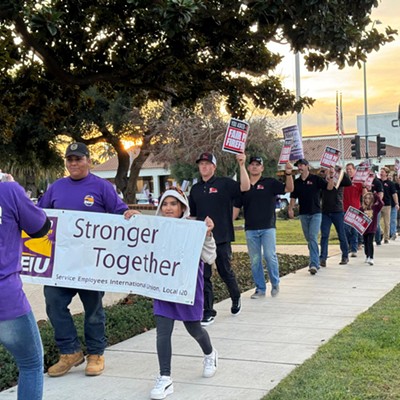More than 1,500 Californians, patients at a pain clinic operated by Dr. Allen Thomashefsky in Santa Barbara, have been notified by local public health officials that they may have been affected by hepatitis B, hepatitis C, or HIV while receiving medical treatment. The possible route of transmission of those blood borne pathogens, at this stage, is unknown.
So far, seven of the people who were patients of Dr. Thomashefsky tested positive for hepatitis C. According to public health officials, six of these cases are probably new ones. Five of these six patients had procedures done on the same day the index patient did.
Contrary to what most laymen think, there are many aspects—several of which are complicated—to giving a proper injection. Of course, proper use of single- and multi-dose vials, demonstrated by the Centers for Disease Control and Prevention in its award-winning materials, is crucial. But it may also be necessary now to reconsider one or more of these standards, especially techniques on how to properly use and manage multi-dose vial medications.
Also, it is unacceptable to reuse a needle or syringe on any patient. Most people believe this is obvious information, which may be part of the problem. But in the more than 40 confirmed outbreaks in the last 12 years, this is a standard that has been violated right here in the United States.
The fact that so many people in and around Santa Barbara have been notified that they were potentially exposed to a life-threatening disease at this pain treatment center is deeply troubling. These men and women and their family members and friends are in my thoughts and prayers. As of March 2015, only 250 of these patients had been tested. I urge the patients who have not yet been tested to please do so.
I was one of 99 people in Fremont, Neb., that was infected with hepatitis C in 2002. At the time, I was fighting breast cancer, going in frequently to my local clinic for chemotherapy treatment. My husband, Tom, a family physician, was by my side. I was very ill. We did not notice the unsafe conditions and practices in this clinic. It was later discovered that saline bags were being improperly used, and syringes were being used on multiple patients.
Along with Travis Bennington, a lawyer, I wrote about the Nebraska outbreak in the book A Never Event: Exposing the Largest Outbreak of Hepatitis C in American Healthcare History. We also helped start HONOReform (Hepatitis Outbreaks National Organization for Reform) in 2007.
At HONOReform, our vision is to have a nation in which health-care providers always follow the fundamental injection safety practices that are designed to protect all patients each and every time they receive an injection. Throughout the country, we are engaged in protecting the injection process “from manufacturing through disposal.”
At the time, the 2002 Nebraska outbreak was unprecedented. Repeatedly, we were told by physicians, public health leaders, and others in the area that there is no possible way something like this should occur in Nebraska, in the United States—that it was clearly a “never event.”
And, while HONOReform takes no direct credit, we are pleased to report that there was not one confirmed outbreak of viral hepatitis caused by a lack of adherence to the medical injection process in the United States in 2014. Still, ongoing education and re-education is essential. This outbreak in Santa Barbara proves this. Along with our CDC colleagues and many others, we continue to make injection safety education a priority, from Capitol Hill to small clinics in the Midwest.
At HONOReform, safety by engineering is also a large part of our coordinated mission to help ensure that every injection given in the United States is a safe one. We work alongside industry partners who are revolutionizing injection devices so they can be used only one time. We closely monitor the ongoing debate on packaging of single- and multi-dose vials.
Along with the CDC and the CDC Foundation, HONOReform convened the first meeting of the Safe Injection Practices Coalition in 2008. Together, as a public-private partnership, our many colleagues developed the One and Only Campaign (oneandonlycampaign.org), which is currently being accessed by patients and providers in many states, including California. Our motto is, “One Needle, One Syringe, Only One Time.”
For more information, we urge providers and patients in the area to contact our partners at the California Department of Public Health for more information. They have established an information line for people who have been notified they may have been placed in harm’s way. HONOReform would like to help, too.
Through every means at our disposal, incidents like the one in Santa Barbara must be prevented. We need to learn from these situations, and work together to make and sustain necessary improvements. Through education and outreach to providers and the public, my colleagues and I continue our work to make the injection process safe for patients. As we work to create and sustain widespread change, we bring our understanding, compassion, and resources to those who have been affected.
Evelyn McKnight, of Fremont, Neb., is founder and president of HONOReform. She can be reached at [email protected].








